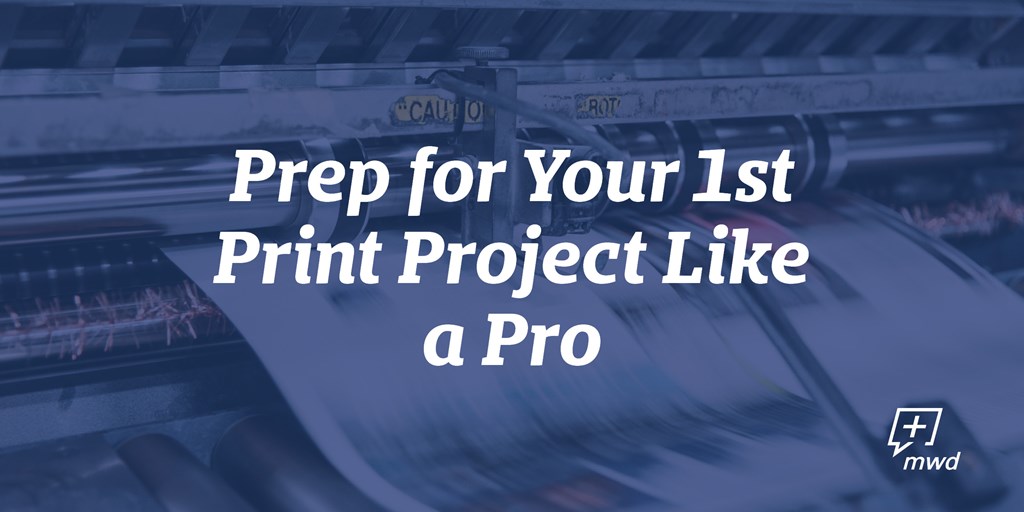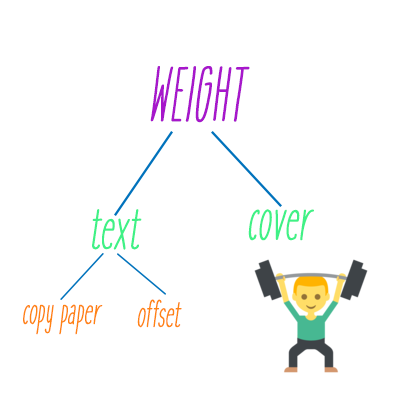You’ve got your content triple-proofed, your artwork is looking sharp, and you have a thoroughly scrubbed list of a thousand recipients formatted perfectly in an Excel spreadsheet. You’re ready to go and request your very first print job! Or are you?
Anyone in the print industry will readily admit that it can be quite intimidating for newcomers. Some days, it may even feel like learning a completely new language. Whether you’re brand new to working with a print vendor, or you simply need a refresher, we have broken down some of the most commonly-used terms to help you prepare for your project with confidence. We believe in you!
Dimensions
Common print sizes include 8.5" x 11"(considered “standard” sized paper), 8.5" x 5.5"(a traditional postcard size), a “self-mailer” (piece that can be mailed without an envelope), #10 envelopes(4 1/8" by 9 1/2", holds a standard sized sheet folded into thirds) and #9 reply envelopes(8 7/8"x 3 7/8", often found enclosed with statements).
Ink Types
CMYK: Stands for “cyan, magenta, yellow and black”, and is a very common ink type used by printers. CMYK printing is known as a “four-color process” in which four plates, each with their own color, are applied one at a time to different rollers and the paper is then fed through. Other ink types include black, as well as single or multiple “spot colors”.
Spot Colors: Spot color printing is typically used for projects that only need color printing in one area, such as a colored logo on a letterhead. In this type of printing, a single color ink is applied to a single plate with one press run. If more spot colors are needed, they are applied one print run at a time. Spot color printing is usually more vibrant but has a smaller color range. This site provides more explanation of the difference between the two.
What does "bleed" mean? If you’ve seen an ad that has color extending to all edges of the sheet, you’ve seen a bleed. The printer will actually print beyond the dimensions of the paper, typically by 1/8", to ensure that the color “bleeds” to all edges of the sheet.
Paper/Stock
Paper can either be coated or uncoated.
Coated: Includes gloss, matte, and semi-gloss.
Uncoated: Looks like what normal copy paper would look like, without any type of shine or matte finish.
When it comes to paper weight, there are two main categories: text weight and cover weight. Comparing the two categories is easier if you have an example of a book in mind, with the inside pages being text weight, and the thick outside being the cover weight.
Text weight can be broken down into two additional categories: copy paper (which is exactly what it sounds like: the typical paper you used to print something at work) and offset (similar to copy paper, but with a slightly thicker and higher quality). Most projects will end up being a combination of both text and cover weight, with different coating options as well. The size of the sheet, as well as budget, will affect what combinations you choose.
Bindery
Bindery refers to how a printed piece is finished, but it also includes decorative cover options. Typically, it is driven by what the end-product is supposed to look like.
- Score: Usually applies to cover weight stock. When a machine scores paper, it bends the fibers to assist in an easy fold. If you buy a box of thank-you cards, for example, they may arrive flat with the middle of the card scored for easy folding.
- Trim: Refers to cutting paper to the final, finished size.
- Fold: Scoring for booklets, or anything that needs to be smaller. Folding also ensures that all page elements, such as headers, are kept aligned when the papers are folded.
- Collate: This is a term you’ve probably seen when you print at home! Collating papers means that multi-sheet projects are printed and sorted in a way that creates a complete set.
- Perforate: If you’ve ever received a bill with a tear-off portion at the bottom, you’ve seen a perforated piece of paper. In this type of bindery, tiny holes are punched into the sheet to allow for an easy, clean tear.
- Die-cut: Any non-linear cut must be done specially as a die-cut. A door hanger, with a large hole and a slit, is an example.
- Custom die: Refers to a die-cut style that is typically not done in-house and may require a custom cut, or for it to be handled at another printing facility.
- Convert: Typically refers to envelope converters. For example, an envelope may be printed flat with several design elements on it. These flat sheets would be sent to a converter to properly fold and seal them into standard envelopes.
As far as print terms go, this list has only scratched the very surface! As you embark on more and more print projects, you will be surprised at how much your vocabulary expands. For more terms and future reference, we recommend bookmarking the Print Wiki website.

